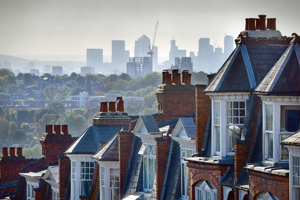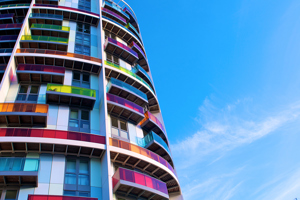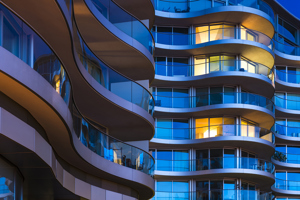Post-Grenfell – where are we now?
In our autumn edition of Construct.Law we reported on the government’s June 2019 consultation on building and fire safety issues, our response to that consultation and its key proposals for the construction industry:
- the establishment of five “dutyholders” with clear responsibilities throughout a building’s design, construction and occupation; and
- the principle of the three gateways and the golden thread: the regulatory requirements to be discharged at the planning, design and construction phases of a building and the requirement for a “golden thread“ of information and key data relating to the building to be stored digitally, which must be updated and remain accurate throughout a building’s life-cycle.
This new regime is likely to result in increased and longer term liability for designers, engineers and contractors responsible for fire safety and the structural integrity of a building. The government also proposes to introduce legislative penalties and criminal sanctions.
We noted the hardening of the insurance market in response to these proposals. We have seen insurance premiums dramatically increase, alongside a marked reduction in the availability of the certain insurance.
There is also an expectation that the types of ‘at risk’ buildings will increase over time, perhaps to ultimately capture commercial high rise as well, but initially to extend to buildings such as hospitals and prisons.
At the time of writing, the government has not yet provided a response to the consultation, but there have been numerous other developments affecting the construction industry since the Grenfell tragedy.
Fund for replacement of ACM Cladding
On 9 May 2019 the government announced that it would allocate £200 million to replace unsafe Aluminium Composite Material cladding (ACM) from around 176 privately owned high-rise buildings. Applications for the fund closed on 31 December 2019. However, if there are mitigating circumstances for failure to meet the deadline, responsible entities should inform the Ministry of Housing, Communities and Local Government (MHCLG). It will be at the application board’s discretion whether to grant an extension.
There have been recent media reports referring to the ‘naming and shaming’ of building owners who fail to replace noncompliant cladding. In a statement to the press in September 2019, the Housing Secretary, Rt Hon Robert Jenrick MP, said that “inaction will have consequences and I will name and shame those who do not act during the course of the autumn”.
It is worth noting that there may be cladding and other exterior materials, such as balconies, that are non-compliant and fall foul of the Building Regulations, but which are not covered by the fund.
Building Safety Standards and BSR
On 14 October 2019, the implementation of a new building safety standard was announced in the Queen’s Speech. It was stated that the government “will bring forward laws to implement new building safety standards”, thus progressing the implementation of a new independent Building Safety Regulator (BSR). In January 2020, the government announced the BSR will be set up immediately, as part of the Health and Safety Executive.
According to the government, the BSR will oversee the design and management of buildings, with a strong focus on ensuring the new regime for higher risk buildings is enforced effectively and robustly, as well as overseeing compliance with safety regulations by contractors, designers and building owners. The BSR will have the power to apply criminal sanctions to building owners who do not obey the new regime.
The Bill also promises legislation requiring developers of new homes to belong to a New Homes Ombudsman. An MHCLG spokesperson said the Ombudsman would be a “watchdog that champions homebuyers, protects their interests and holds developers to account”.
Building Regulations
On 30 August 2019, the new edition of Approved Document B (Fire Safety) came into force. This was published in response to the recommendations made by Dame Judith Hackitt’s independent review into Building Regulations and fire safety. The new Approved Documents do not reflect any new policies, but take account of amendments to the Building Regulations made following the Grenfell tower fire, namely:
- The ban on the installation of combustible materials in external walls on buildings with a height of 18 metres or more introduced in October 2019. The Building Regulations now require that, in any building with a storey 18 meters or more in height containing:
- one or more dwellings;
- an institution, or
- a room for residential purposes (excluding hostels, hotels or boarding houses);
any installation product, filler material (such as the core materials of metal composite pans, sandwich panels and window spandrel panels but not including gaskets, sealant and similar) etc. used in the construction of an external wall should be European Class A2-s1, d0 or A1 or better…“ (i.e. be of limited combustibility); and
- Restrictions on the use of desktop fire safety assessments rather than testing introduced in April 2019.
In November 2019 the Administrative Court quashed the introduction of new regulation 2(6)(b)(ii) which would have prohibited the use of “a device for reducing heat gain within a building by deflecting sunlight which is attracted to an external wall” (i.e. external shutters, awnings and blinds), unless certified as complying with certain European classifications and British Standards. In response, the government issued a circular letter on 11 December 2019 confirming the Administrative Court judgment did not otherwise affect the cladding ban and reiterating that its policy remained that combustible material should not be used in or attached to external walls. It also reiterated Building Control’s overarching requirement to consider the risk of fire spreading over buildings’ walls.
It is likely the government will take further steps during the course of 2020 to implement Dame Judith Hackitt’s wider recommendations, including:
- Setting up new regulatory framework for multi occupancy higher risk residential buildings that are ten storeys or more in height (HRRBs) involving a new Joint Competent Authority (JCA) to oversee management of safety risks in such buildings. The JCA would hold a database of all high-risk residential buildings and oversee the sign-off of HRRBs with duty holders required to demonstrate that their plans are detailed and robust.
- A strict regime for overseeing the construction of HRRBs, clarifying the role of Local Authority Building Control (to be renamed Local Authority Building Standards (LABS) who should have additional powers to issue improvement and prohibition notices.
- An increased focus on safety during a building’s occupation, including a means for tenants to raise concerns. This issue has also been raised in the government’s June 2019 consultation, Building a safer future: proposals for reform of the building safety regulatory system.
Grenfell Inquiry Phase 1
Phase 1 of the inquiry focused on establishing the facts of what happened on the night of 14 June 2017. Of particular interest to the construction industry is the inquiry’s conclusion that the cladding did not comply with Building Regulations. Sir Martin Moore-Bick, chair of the Grenfell Inquiry, stated that there was “no good reason” to omit certain conclusions in relation to the buildings external façade and that it would be an “affront to common sense” to suggest that the external building was compliant with the requirements of the Building Regulations. He concludes, in this regard, that instead of resisting the spread of fire, the external walls “promoted it” and therefore did not comply with the Building Regulations.
Public hearings for Phase 2 of the Inquiry, which began on 27 January 2020, will consider wider questions about the refurbishment of the tower and the adequacy of applicable Building Regulations at the time along with more technical elements such as choice of materials and material testing.
New valuation process for high risk buildings
There have been growing concerns by home owners and lenders regarding the valuation of properties in high risk residential buildings over 18 metres and with some valuations coming back at £0 where the external wall cladding material was unknown or untested, transactions across the market have been affected. In an effort to overcome these issues RICS, the Building Societies Association (BSA) and UK Finance announced on 16 December 2019 a new industry-wide valuation process for buying, selling and re-mortgaging homes in buildings above 18 metres (six storeys). The process involves a new External Wall Fire Review, whereby all buildings will be checked by fire safety experts who will then advise valuers, lenders, purchasers and sellers.
Updated advice for building owners issued
The Independent Expert Advisory Panel set up by the government shortly after the Grenfell tower fire issued updated advice in January 2020. It advises building owners, irrespective of the height of the building, to consider the risk of fire spread and the risks of external wall systems and fire doors. In summary, the guidance:
- Demands remediation of wall systems with ACM, HPL or similar cladding/ panels in high rise and HRRBs;
- Requires external fire spread to be part of fire risk assessment for all residential buildings; and
- Updates advice on fire doors for all residential buildings, as well as for balconies, external wall insulation and smoke control systems.
Consultation on cladding ban
2020 will inevitably see further measures aimed at implementing the recommendations of Dame Judith Hackitt.
Indeed, in January 2020 the government launched a consultation on expanding certain aspects of the ban on the use of combustible materials in external walls suggesting amongst other things:
- The inclusion of hotels and boarding houses;
- Lowering the height threshold of the ban from 18 meters to 11 meters;
- Banning the use of metal composite materials with a polyethylene core in and on external walls and in specified attachments in all buildings, regardless of height; and
- Extending the ban to include solar shading products, including but not limited to blinds and shutters.
This consultation concludes on 13 April 2020.
Conclusion
Considerable progress has been made through the government’s various consultations and new regulations in relation to building and fire safety. The £200 million government fund will offer assistance with improvements in safety for existing high-rise buildings and the government has confirmed that the ban on combustible cladding is not affected by the Administrative Court’s quashing of the new regulation 2(6)(b)(ii).
It remains to be seen to what extent the government will implement the recommendations made by Dame Judith Hackitt, but all indications are that legislation imposing more stringent building safety requirements will be enacted in the foreseeable future.




















